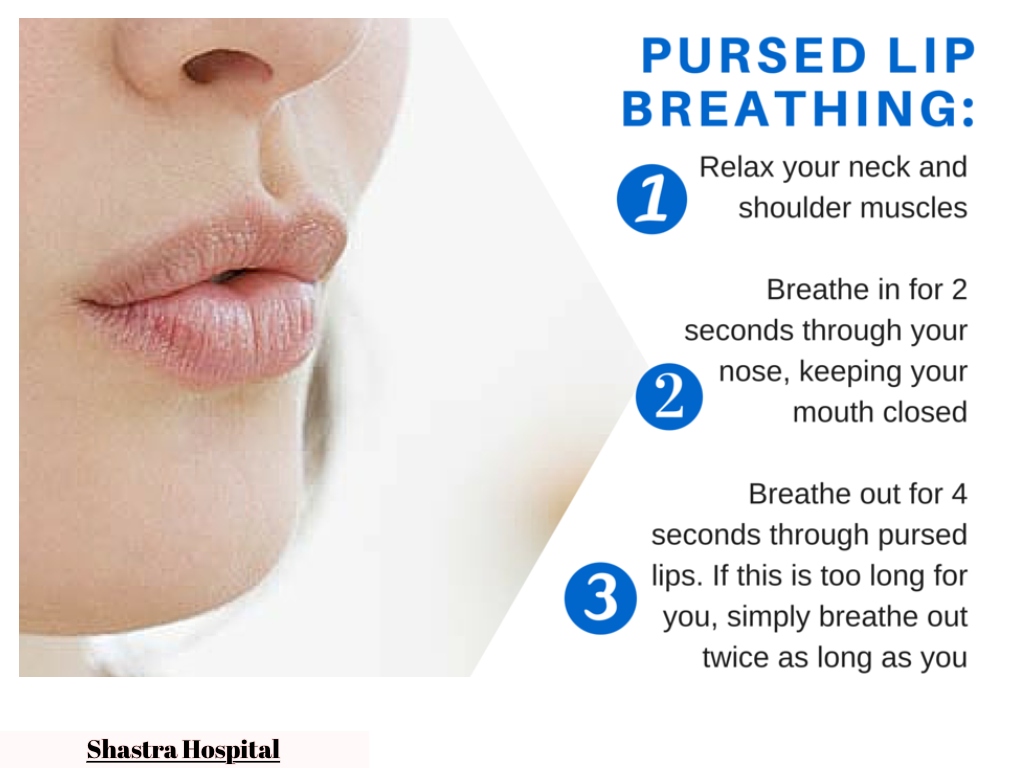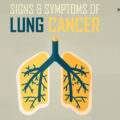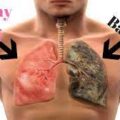Breathing (or ventilation) is the process of moving air out and in the lungs to facilitate gas exchange with the internal environment, mostly to flush out carbon dioxide and bring in oxygen. All human beings need oxygen for cellular respiration, which uses the oxygen to break down foods for energy and produces carbon dioxide as a waste product. Breathing, or “external respiration”, brings air into the lungs where gas exchange takes place in the alveoli through diffusion. The body’s circulatory system transports these gases to and from the cells, where “cellular respiration” takes place.
When you’re short of breath, it’s hard or uncomfortable for you to take in the oxygen your body needs. You may feel as if you’re not getting enough air. Sometimes you can have mild breathing problems because of a stuffy nose or intense exercise. But shortness of breath can also be a sign of a serious disease.
What causes me to feel short of breath?
Many things can cause breathlessness, including:
■ Chronic lung disease (chronic means that you have it all the time)
■ A sudden lung problem (called an acute problem) like an infection, such as pneumonia or COVID-19
■ A flare-up of chronic lung disease due to infection
■ Inhaling dust, chemicals, or other hazards in the air outside or inside your home
■ Heart conditions such as a “heart attack” or heart failure
■ Lung cancer or chemotherapy for other cancers
■ Anemia (low red blood cell count)
■ Low fitness level (being ‘out of shape’) Shortness of breath may come on with activities you know will cause a problem, such as taking a walk or climbing stairs. Sometimes it may seem like it comes on for no reason all.
Tell your healthcare provider about your breathing problem and how it is affecting your life. Be sure to include:
■ When the shortness of breath started (for example, suddenly, two days ago)
■ What (if anything) makes your breathing better (for example, using your albuterol inhaler) or makes it worse (for example, showering or walking across a room)
■ If you usually bring up mucus, are you bringing up more or less than usual? Has the color or thickness changed? Does it have a bad odor?
What can I do to treat or reduce breathlessness?
Often there are things you can do to limit or control shortness of breath. The first step is to figure out what is causing the problem. Work with your healthcare provider to find out what is causing it and what the best treatment may be. Many times, you will have to try many different treatments before you find one that helps you. Below are some things that may help your shortness of breath.
- Take your medications as prescribed. You may need to take some medicines every day, even if your breathing is good. This may be the main reason many people have shortness of breath.
- Ask a respiratory healthcare professional to show you how to use your inhaler(s) and/or nebulizer. Ask about using a holding chamber with your inhaler to get as much medicine as possible into your lungs. Tell your healthcare provider about any problems you experience from your medicines.
- Oxygen is a medicine and may help people with low oxygen levels breathe easier. Oxygen is not for people who are short of breath from other conditions.
- Learn breathing techniques. There are special ways you can breathe that may help when you are short of breath. For example, if you have chronic obstructive lung disease (COPD), you may be taught pursed-lip breathing. This will help you breathe more effectively. Pursed lip breathing helps remind you to slow down your breathing and take longer to exhale than inhale.
- Even if you have shortness of breath with just a little activity, it is possible to get back some strength and endurance/stamina. You may have given up or avoided activities because of your lung problems, but if you do not exercise, your muscles will get even weaker. Being ‘out of shape’ can result in even more breathing
What To Do When You Have Trouble Breathing?
Pursed-lip breathing: is a breathing technique designed to make your breaths more effective by making them slower and more intentional. You do this after inhaling by puckering your lips and exhaling through them slowly and deliberately, often to a count. when you have trouble breathing simply:
- Relax your neck and shoulder muscles.
- Slowly breathe in through your nose for two counts, keeping your mouth closed.
- Purse your lips as if you’re about to whistle.
- Breathe out slowly and gently through your pursed lips to the count of four.
SEE: How To Administer Narcan Nasal Spray







